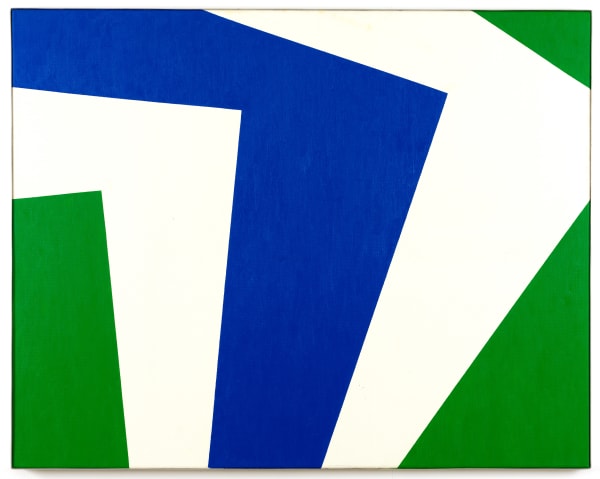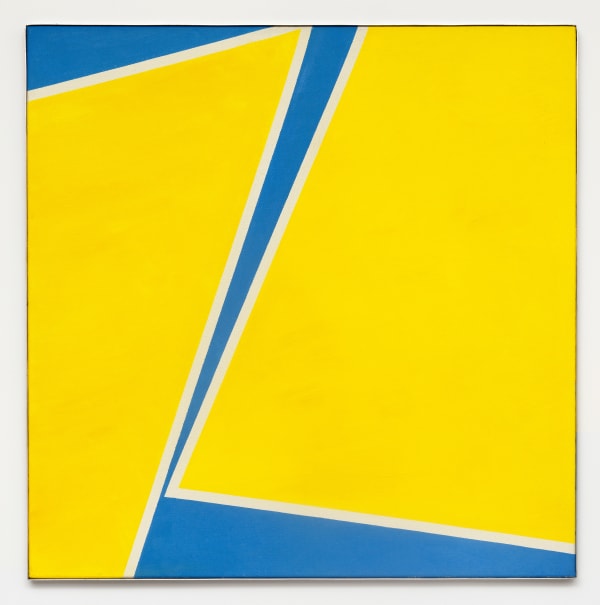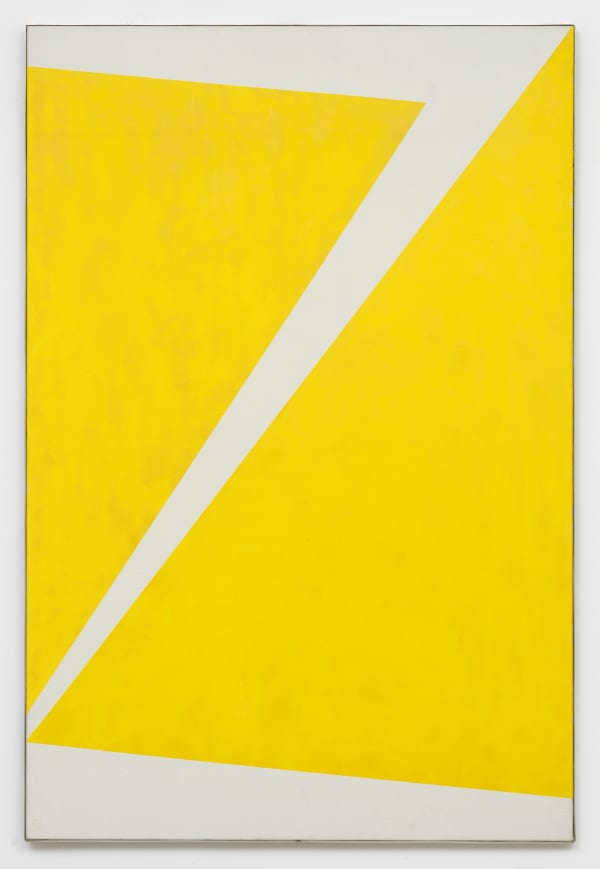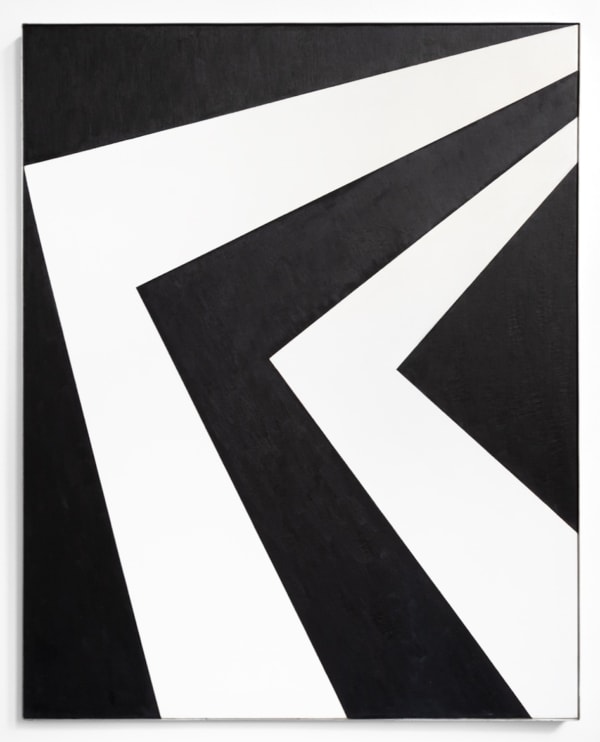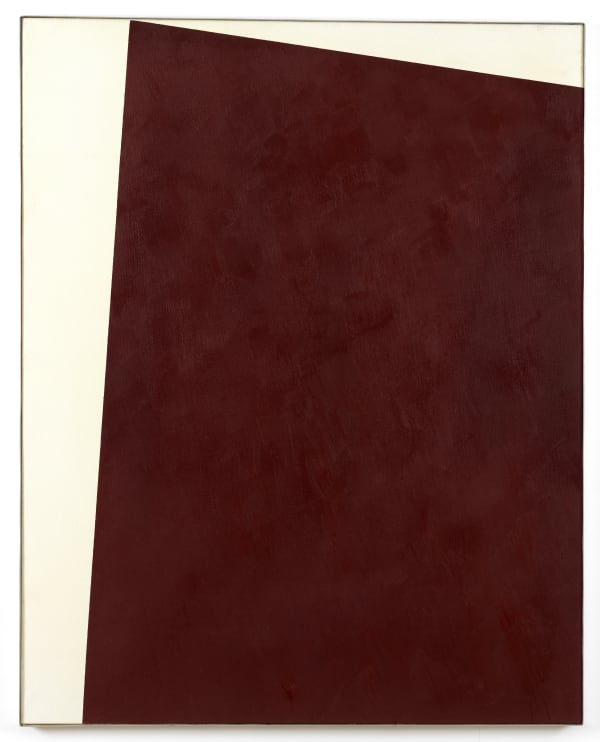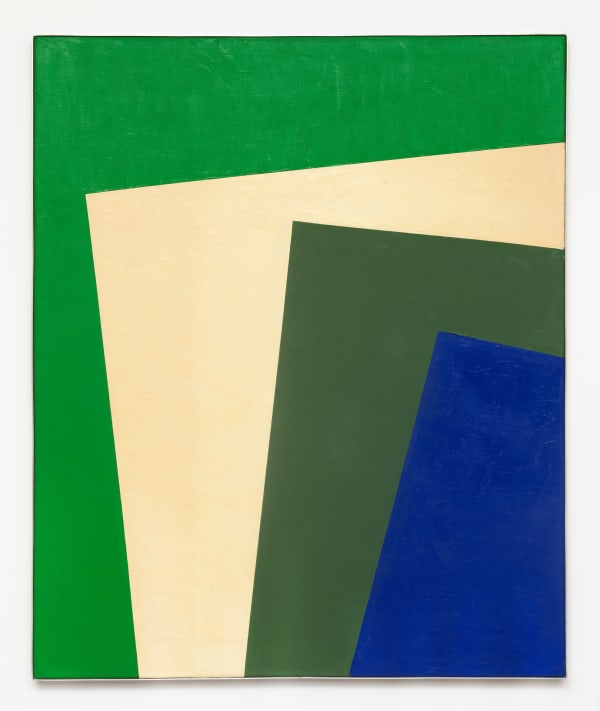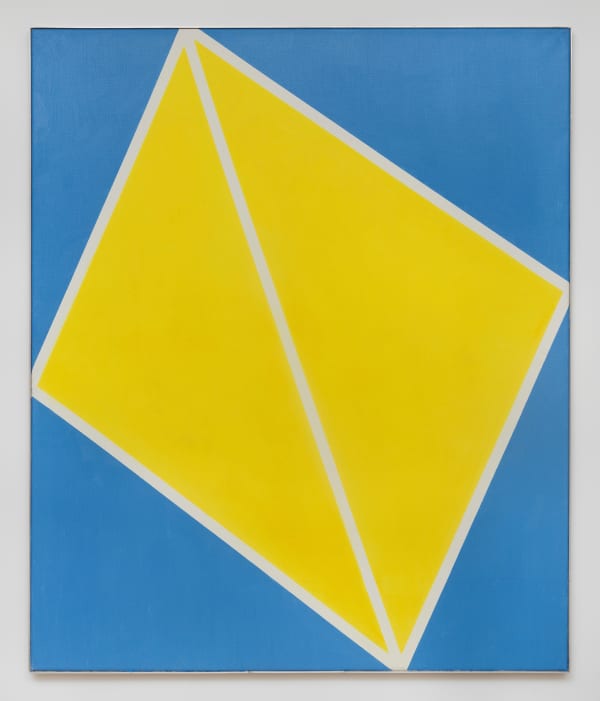Willem Hussem: Though I'm seventy I still plant trees
Past exhibition
Overview
Dürst Britt & Mayhew kicks off the new season with a solo exhibition by renowned Dutch artist Willem Hussem (1900-1974). The exhibition focuses on works from the early 1970s, the last period of Hussem’s artistic life, in which his vocabulary changed from lyrical constructivism to a very personal adaptation of hard-edge painting.
After 1971, with a few exceptions, Hussem only created geometrically abstract paintings. Curved and round lines no longer appear in his work at all. The shapes are completely determined by sleek, straight lines. In his late paintings he usually places one or two colour shapes against a monochrome background. The visual power of the compositions lies in the tension between the areas of colour, between the shapes themselves and between the shapes and the surface.
What sets him apart from other hard-edge masters like Ellsworth Kelly or Dutch artist Bob Bonies is that Hussem's paintings do not evoke the smoothness of car paint. In a number of his works the colour areas have a relief-like structure and the brush strokes or palette knife smudges are clearly visible. The forms therefore have a strong physicality. Geometry and gesture seem to go hand in hand.
This is the first ever exhibition to focus on this relatively unknown period of Hussem's practice. We therefore invited London based American art critic Alex Bacon to write an essay placing this specific body of work in an international context.
We invited artist Paul Beumer to design a special colour scheme for the exhibition walls.
Willem Hussem (1900-1974) continually experimented and produced highly diverse works of art, including painting, drawing and sculpture. A constant aspiration towards simplicity and purity underlies his entire oeuvre. This aspiration is closely connected with his need for clear systems of thought. It was in Hegel’s philosophy and Zen Bhuddism that he found the intellectual basis for the universalistic outlook on the world that would determine his thought and work.
Throughout his life Willem Hussem was in search of a manner of working that tied in with his philosophical views. In poetry, he found this in short lyrics, while in art he initially found it in a style that steered a middle path between expressionism and constructivism, and finally in geometrical abstraction.
In 1960 Hussem represented The Netherlands at the Venice Biennial. During his lifetime he had solo exhibitions at Gemeentemuseum in Den Haag, Museum Het Princessehof in Leeuwarden and Stedelijk Museum in Schiedam and participated in major group exhibitions in Museum Boijmans van Beuningen in Rotterdam, Van Abbemuseum in Eindhoven and Stedelijk Museum in Amsterdam. He also exhibited twice at the Carnegie International in Pittsburgh, US.
After Hussem’s death in 1974, the ‘Hussem Committee’, which consisted of influential artists, art historians and museum directors, kept his legacy alive. Retrospectives were mounted at Museum Boijmans van Beuningen in Rotterdam, Centraal Museum in Utrecht, Rijksmuseum Twenthe in Enschede, Museum Dordrecht and most recently at Museum Belvedere in Oranjewoud.
Hussem’s work is held in many private and public collections, including Centraal Museum, Utrecht, Kunstmuseum, Den Haag, Museum Boijmans van Beuningen, Rotterdam and Stedelijk Museum, Amsterdam.
In 2024 Dürst Britt & Mayhew has shown Willem Hussem’s work in solo presentations at TEFAF Maastricht and Vitrine Gallery in London, as well as in a group show with Dutch painters Klaas Kloosterboer and Robbin Heyker at Billytown in The Hague and in transhistorical dialogue with Mexican artist Alejandra Venegas in the Frontspace of the gallery.
Installation Views
Works
-
 Willem Hussem, Composition (WH12-27), 1970
Willem Hussem, Composition (WH12-27), 1970 -
 Willem Hussem, Composition (WH4-3), ca. 1972
Willem Hussem, Composition (WH4-3), ca. 1972 -
 Willem Hussem, Composition (WH17-14), ca. 1972
Willem Hussem, Composition (WH17-14), ca. 1972 -
 Willem Hussem, Composition (WH3-6), ca. 1972
Willem Hussem, Composition (WH3-6), ca. 1972
-
 Willem Hussem, Composition (WH3-2), ca. 1972
Willem Hussem, Composition (WH3-2), ca. 1972 -
 Willem Hussem, Composition (WH3-12), ca. 1972
Willem Hussem, Composition (WH3-12), ca. 1972 -
 Willem Hussem, Composition (WH2-12), ca. 1971
Willem Hussem, Composition (WH2-12), ca. 1971 -
 Willem Hussem, Composition (WH3-3), ca. 1972
Willem Hussem, Composition (WH3-3), ca. 1972








